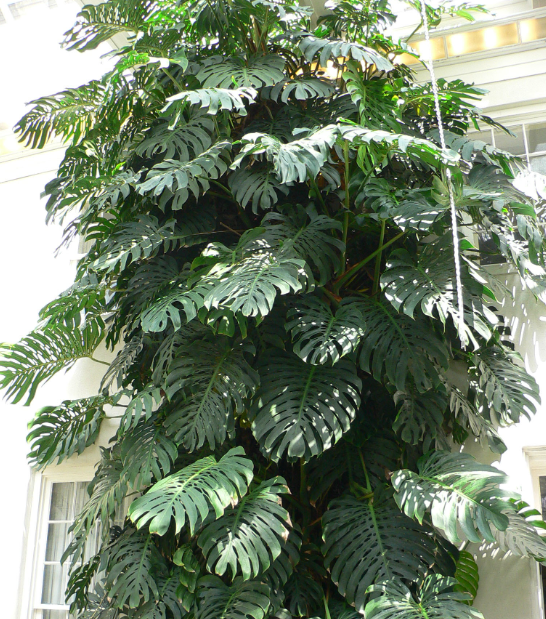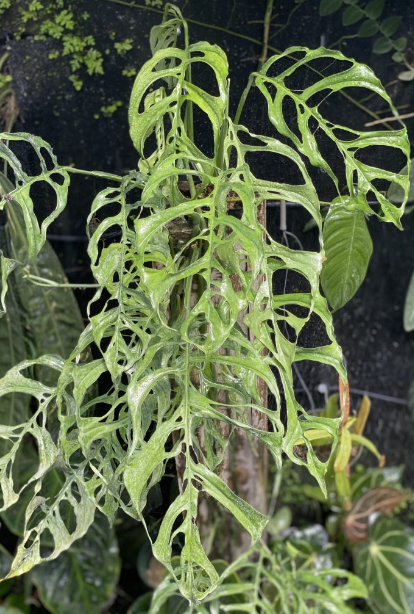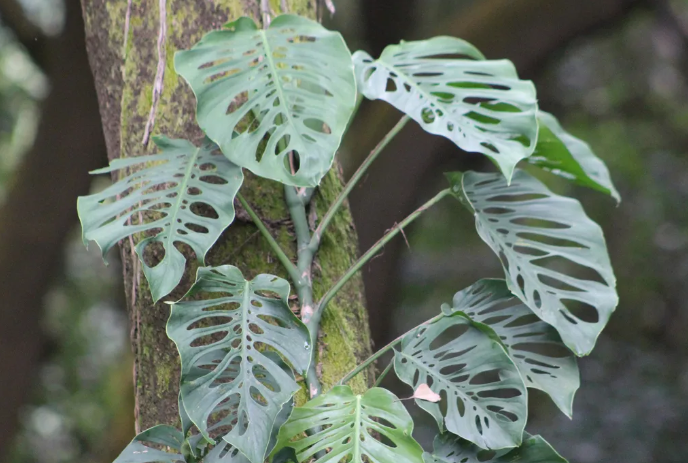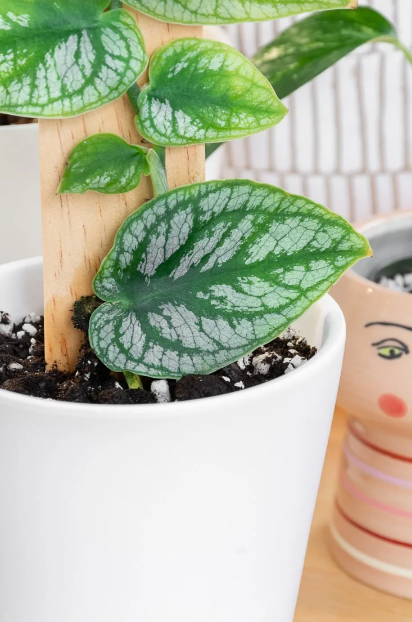Monstera, scientifically known as Monstera deliciosa, is a beautiful plant that thrives as a popular houseplant and exists in its natural habitat, the wild. In this article, we will take a closer look at various monstera varieties and delve into their unique characteristics and the habitats in which they can be found.
Monstera Varieties and their Natural Habitats:
Monstera deliciosa:
Commonly known as the Swiss Cheese Plant, Monstera deliciosa is the most widely recognized variety. It originates from the tropical rainforests of Mexico, Panama, and Costa Rica. In the wild, it thrives in the understory of the rainforest, where it receives dappled sunlight through the dense canopy. Monstera deliciosa is characterized by its large, heart-shaped leaves that develop unique fenestrations, giving it a distinctive appearance. It is also known for its edible fruit, a large green cone covered in hexagonal scales when ripe.

Monstera adansonii:
The Swiss Cheese Vine or Monkey Mask variety is native to the rainforests of Central and South America. You can find it in Mexico, Brazil, and Colombia. Monstera adansonii typically grows as an epiphyte, attaching to trees or rocks. It prefers a warm and humid environment with filtered sunlight. This variety features smaller leaves compared to Monstera deliciosa, with intricate patterns of holes and fenestrations. Its vining nature makes it popular for hanging baskets or growing on trellises.

Monstera obliqua:
Often referred to as the “Swiss Cheese Plant’s elusive cousin,” is a rare variety native to the rainforests of Central and South America. You can find it in countries like Colombia, Ecuador, and Peru. Monstera obliqua requires high humidity and thrives in the shade of more giant trees in the forest understory. This variety stands out due to its unusually delicate and perforated leaves, giving it an ethereal, lace-like appearance. Its cultivation requirements make it highly challenging and sought-after among plant enthusiasts.

Monstera siltepecana:
This variety is native to the cloud forests of Mexico and Central America. Monstera siltepecana features elongated leaves with dark green veins and silvery patterns. It prefers a cooler and more humid environment than other varieties, often found at higher altitudes. The unique leaf patterns of Monstera siltepecana make it an eye-catching addition to any collection.

Monstera standleyana:
Also known as the Five Holes Plant, Monstera standleyana is native to the rainforests of Central and South America. You can find it in countries such as Costa Rica and Panama. This variety showcases unique leaves with elongated holes and distinct patterns. It thrives in warm and humid conditions with filtered sunlight. Monstera standleyana’s leaves add a touch of elegance and intrigue to any indoor or outdoor space.

Monstera pinnatipartita:
Native to the rainforests of Mexico and Central America, Monstera pinnatipartita is a striking variety with deeply dissected leaves. It prefers the understory of the forest, where it receives indirect sunlight and high humidity. The intricacy of its foliage adds a sense of drama and beauty to any Monstera collection.

Monstera dubia:
You can find it in the rainforests of Central and South America, including countries like Ecuador, Peru, and Brazil. This variety is known for its small size and heart-shaped leaves. It grows as an epiphyte and requires high humidity and indirect sunlight. Although petite, Monstera dubia’s leaves still exhibit fenestrations, giving them a charming and unique appearance.

Monstera karstenianum:
Native to the rainforests of Colombia, Monstera karstenianum is also called the “Peruvian Monkey Mask.” It features intricate leaves with silvery markings and is often found climbing trees or rocks in its natural habitat. It thrives in warm and humid conditions with filtered sunlight. Monstera karstenianum’s leaves display a mesmerizing combination of patterns and textures, adding a touch of elegance to any space.

Conclusion:
Monstera plants exhibit a remarkable array of varieties, each with distinct characteristics and natural habitats. From the well-known Monstera deliciosa to the elusive Monstera obliqua and the intricacies of Monstera karstenianum, these plants showcase their adaptability and beauty in the wild. Whether they grow as epiphytes, climbers, or understory plants, monstera varieties demonstrate the wonders of nature’s diversity in different regions of Central and South America. Embrace the allure of these varieties, and let them bring a touch of the wild into your home or garden. Read article about Syngonium Aurea and Gardenia vs Jasmine in Avi Hoffman Garden.
FAQ about Monstera in the Wild:
A: Yes, you can find it in the wild. They are native to the tropical rainforests of Central and South America, including countries like Mexico, Panama, Costa Rica, Colombia, Ecuador, Peru, and Brazil.
A: Monsteras grow naturally in the tropical rainforests of Central and South America. They thrive in warm and humid environments, often found in the understory or lower levels of the forest. They prefer areas with dappled sunlight, as their large leaves are adapted to capture and utilize filtered light.
A: Monstera Albo, a variety with stunning variegated leaves, is not found in the wild. It is a cultivated form of Monstera deliciosa with unique white or cream-colored patches on its foliage. Plant enthusiasts and growers create These variegated forms through selective breeding and propagation.
A: In the wild, Monstera plants can grow to impressive sizes. Monstera deliciosa, for example, can develop large leaves that measure up to 2 feet (60 cm) in length and width. However, the size of Monstera plants can vary depending on their specific environmental conditions, such as access to sunlight and availability of nutrients.
Please note that the information provided here is based on the natural habitat and characteristics of Monstera plants as observed in the wild. Cultivated varieties, such as variegated forms, may exhibit variations in their growth patterns and sizes due to selective breeding and environmental conditions in which they are grown.







